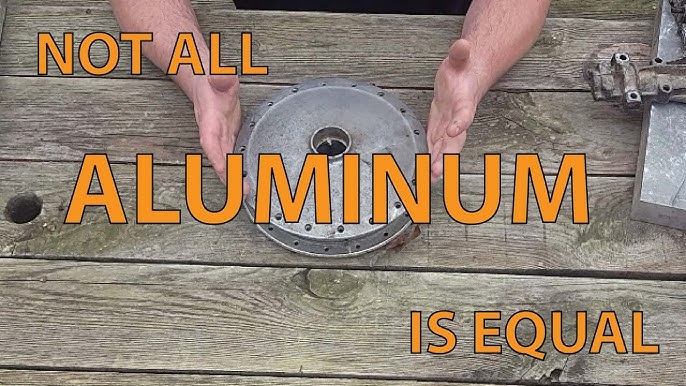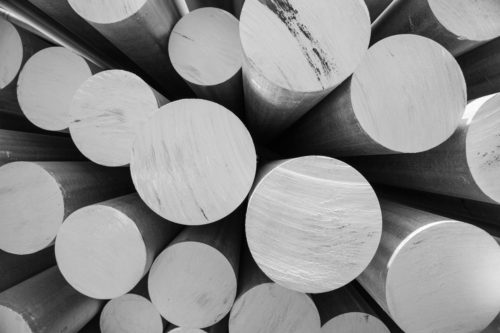About Stahl Specialty Company
About Stahl Specialty Company
Blog Article
The Main Principles Of Stahl Specialty Company
Table of ContentsThe 6-Minute Rule for Stahl Specialty CompanyFacts About Stahl Specialty Company RevealedA Biased View of Stahl Specialty CompanyTop Guidelines Of Stahl Specialty CompanyNot known Factual Statements About Stahl Specialty Company The Ultimate Guide To Stahl Specialty Company

If you're creating a metal product, you've likely considered making use of aluminum as the base material. Pure aluminum has restricted applications, so it is frequently combined with other components, such as silicon, magnesium, and manganese to develop alloys.
Different components and quantities create a vast range of desirable physical and chemical residential or commercial properties. And the Light weight aluminum Organization (AA), based in North America, has actually developed specs that manage aluminum alloys' composition, buildings, and classification. There are 2 kinds of aluminum alloys wrought and cast. Factory workers develop these alloy key ins different methods, which significantly influences their qualities.
The Stahl Specialty Company Ideas
Cast aluminum alloys are made by melting pure aluminum and combining it with various other steels while in liquid type. Then the mix is put into a sand, pass away, or investment mold. After solidification, the metal is gotten rid of from its mold and mildew. At this phase, it is in either its last form or as a billet or ingot for more processing.

For instance, 160.0 represents a cast with a minimum of 99.60% light weight aluminum. The fourth digit, which follows the decimal factor, defines if the alloy is a casting (xxx. 0) or an ingot (xxx. 1). Wrought aluminum alloys additionally begin by integrating molten aluminum with other metals. In comparison to cast alloys, however, they are developed right into their final form via processes such as extrusion, rolling, and bending after the steel has solidified into billets or ingots.
There are several minor distinctions between functioned and cast aluminum alloys, such as that cast alloys can include a lot more considerable quantities of other steels than wrought alloys. However one of the most notable distinction in between these alloys is the construction procedure through which they will go to deliver the last item. Apart from some surface area therapies, cast alloys will certainly exit their mold in almost the exact strong form preferred, whereas functioned alloys will undertake numerous modifications while in their strong state.
If you believe that a wrought alloy might be the best for your task, have a look at some of our articles that clarify more about details wrought alloys, such as Alloy 6061 and Alloy 6063. On the various other hand, if you believe an actors alloy would certainly be much better for you, you can discover much more regarding some cast alloys in our Alloy 380 and Alloy 383 short articles (coming quickly).
A Biased View of Stahl Specialty Company
When selecting a light weight aluminum factory for your manufacturing demands, it's important to research a number of aspects. One of one of the most critical elements to take into consideration is the experience and skills of the factory. Foundry. Choosing a factory who has the ideal expertise of the light weight aluminum casting procedure, and the profile to show for it, aids to have a successful outcome for your job
Having the experience and market understanding to engineer your castings for ideal manufacturing and quality results will certainly simplify the project. Producing aluminum castings calls for a complicated set of processes to accomplish the appropriate results. When picking a brand-new light weight aluminum shop to companion with, guarantee they have extensive industry experience and are well-informed about all elements of the aluminum casting process: layout, manufacturing, product evaluation, and product testing.
The shop ought to likewise have a proven record of delivering outstanding products that satisfy or exceed consumer expectations. Quality control should also go to the top of your checklist when picking a light weight aluminum shop. By functioning with a certified factory who complies with the standards for quality assurance, you can shield the honesty of your item and ensure it meets your specifications.
By picking a business who supplies services that fulfill or surpass your item requirements, you can be certain that your job will be completed with the utmost accuracy and effectiveness. Different components require various production strategies to cast light weight aluminum, such as sand casting or die spreading.
The Definitive Guide for Stahl Specialty Company
Die casting is the name provided to the procedure of producing complex metal components with use of mold and mildews of the part, also known as passes away. The process utilizes non-ferrous steels which do not contain iron, such as light weight aluminum, zinc and magnesium, because of the preferable buildings of the steels such as low weight, higher conductivity, non-magnetic conductivity and resistance to rust.
Pass away spreading production is fast, making high production degrees of components simple. It produces even more parts than any various other check out here procedure, with a high level of precision and repeatability. To learn more about die spreading and pass away casting materials utilized while doing so, continued reading. There are 3 sub-processes that fall under the classification of die spreading: gravity die spreading (or irreversible mold and mildew casting), low-pressure die spreading and high-pressure die spreading.
No matter the sub-process, the die casting procedure can be damaged down into six actions. After the pureness of the alloy is examined, passes away are produced. To prepare the dies for spreading, it is essential that the dies are clean, so that no deposit from previous manufacturings stay. After cleaning, the ejection lubrication is related to the die to make certain a smooth launch.
The Ultimate Guide To Stahl Specialty Company
The pure metal, also understood as ingot, is contributed to the heater and maintained the molten temperature level of the steel, which is then transferred to the injection chamber and infused into the die. The pressure is after that kept as the metal solidifies. Once the steel solidifies, the cooling procedure begins.
(https://www.figma.com/design/5dtta9biYAvurKhKjAAp7p/Untitled?node-id=0-1&t=AoovjzyjwBUdKG93-1)
The thicker the wall surface of the component, the longer the cooling time as a result of the amount of interior metal that likewise requires to cool down. After the part is totally cooled, the die halves open and an ejection mechanism pushes the component out. Adhering to the ejection, the die is closed for the next injection cycle.
The flash is the extra product that is cast during the procedure. This need to be trimmed off using a trim device to leave just the major element. Deburring eliminates the smaller items, called burrs, after the trimming procedure. The element is polished, or burnished, to provide it a smooth coating.
Stahl Specialty Company for Dummies

Zinc is one of the most used alloys for die casting due to its reduced cost of raw materials. Its corrosion resistance additionally permits the components to be long lasting, and it is one of the more castable alloys due to its reduced melting point.
As mentioned, this alloy is one of one of the most generally made use of, yet manufactures will, at times, choose aluminum over zinc as a result of light weight aluminum's manufacturing advantages. Aluminum is highly affordable and one of the a lot more versatile alloys. Light weight aluminum is utilized for a number of different products and markets anything from window frameworks to aerospace materials.
Report this page